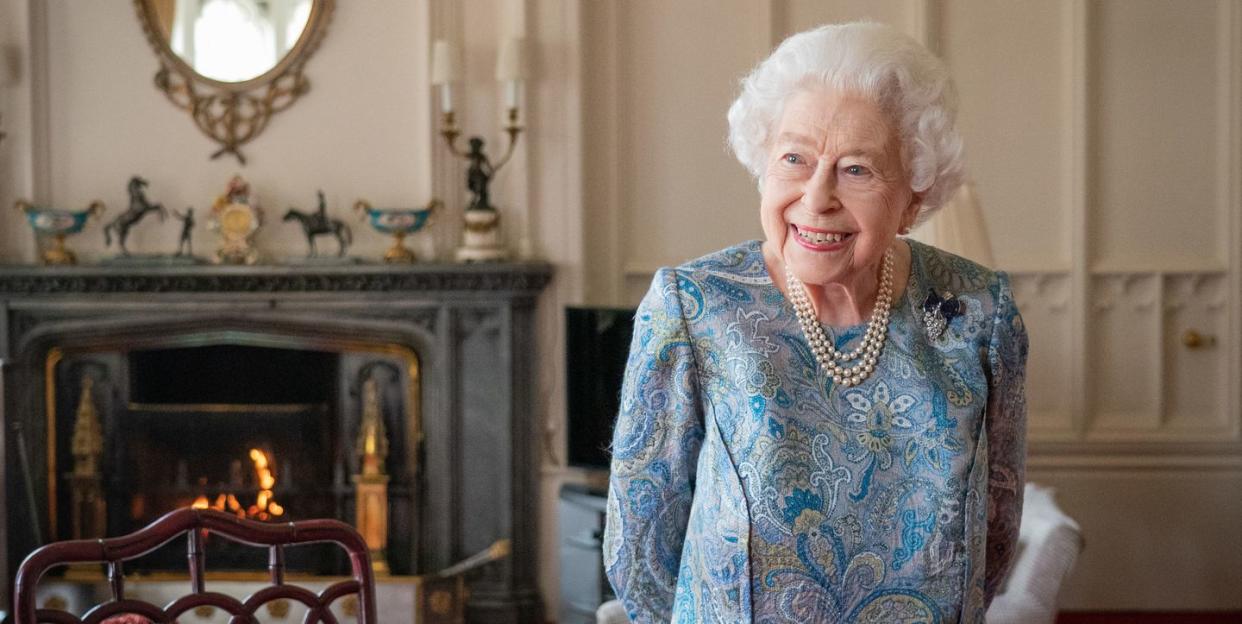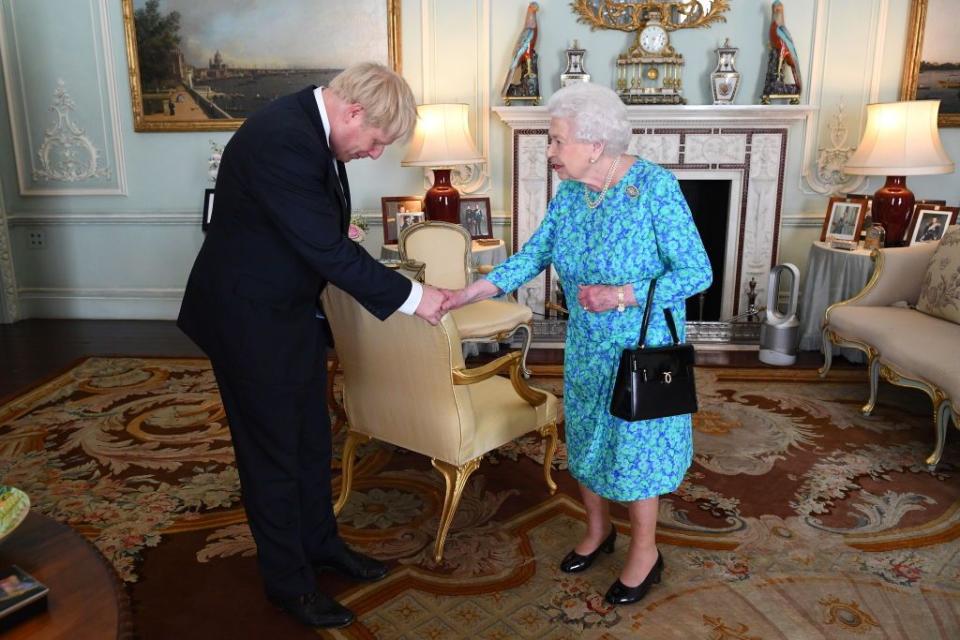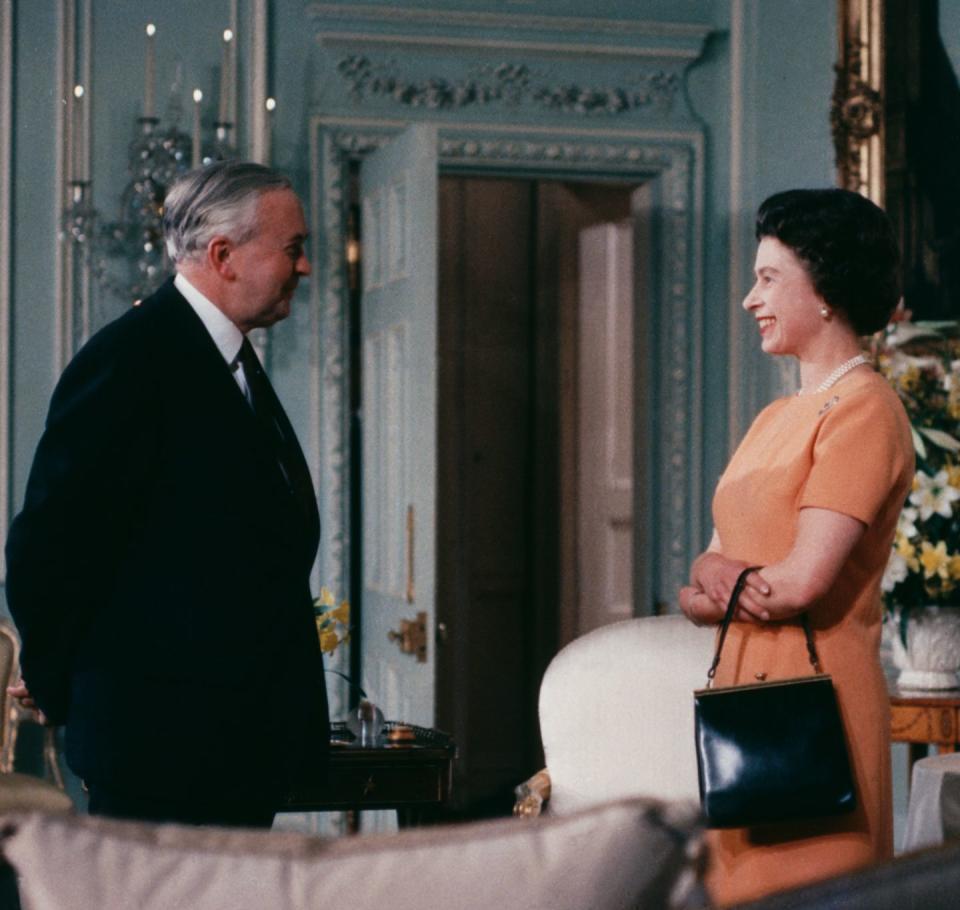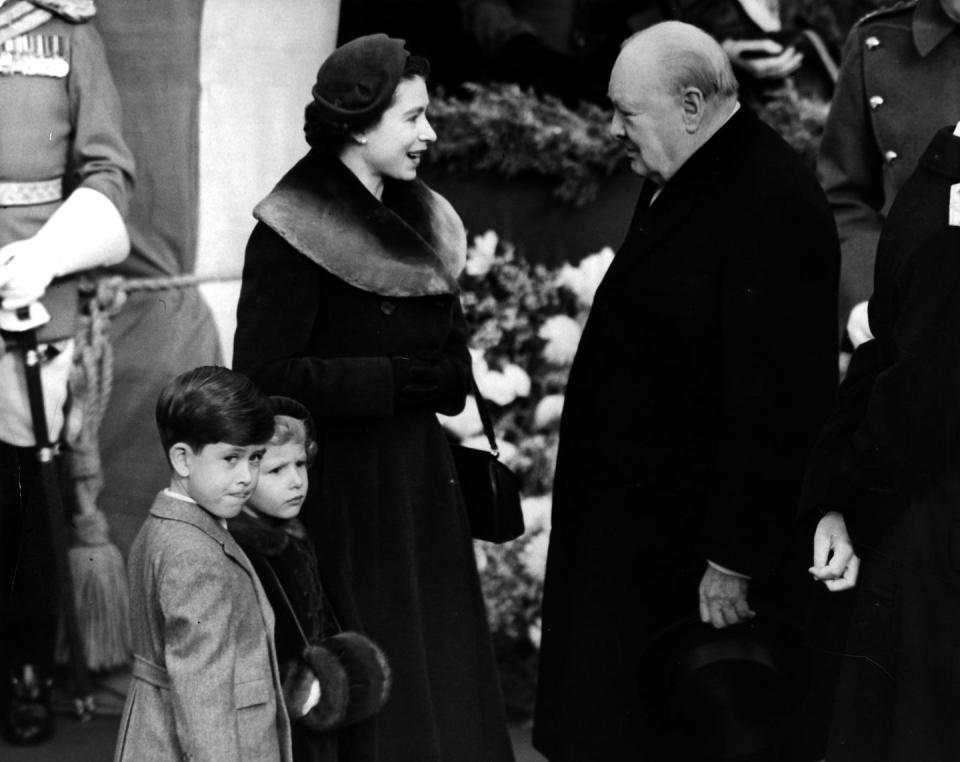What is Queen Elizabeth's Role When There is a New Prime Minister?

- Oops!Something went wrong.Please try again later.
It is now only a matter of days before the UK gets a new Prime Minister after Boris Johnson resigned on July 7 following a revolt from members of his party. The two candidates competing for the position are Liz Truss and Rishi Sunak, and a winner will be announced on September 5. Following the announcement, the incoming Prime Minister will have an audience with the Queen—an important constitutional meeting between the UK’s head of state and its new political leader. He or she will be the Queen’s 15th Prime Minister since she came to the throne in 1952. Read on for more information about this symbolic moment.

How Will The New British Prime Minister be Decided?
Unlike in the U.S., where elections are held specifically for the President, the UK does not hold a public election to just decide a Prime Minister. Instead, the leader of the political party who forms a government following a general election becomes Prime Minister. If they leave their position between elections then it is the members of their political party who decide on their new leader. So, the approximately 200,000 Conservative Party members will choose the next UK Prime Minister. The process so far has seen several candidates narrowed down to the final two, with ballots closing on September 2 and a winner announced three days later. The monarch plays no role in choosing a new Prime Minister and does not vote in a general election. “As head of state The Queen has to remain strictly neutral with respect to political matters,” the royal household states.
Why Does The Queen Meet With The New Prime Minister?
It is the Queen’s constitutional role as head of state to meet with and appoint a Prime Minister, inviting them to form a government in her name. As explained above, this most often happens following a general election but can also happen when a new leader is chosen between general elections. A Prime Minister’s term in office formally begins once this meeting has taken place. An outgoing Prime Minister will formally inform her of their resignation in a short audience, then an incoming Prime Minister will ask to form a government in what the Institute for Government describes as a “well-rehearsed sequence of events.”
“By convention the incoming British Prime Minister is received in audience by the Queen, to date in person, and Her Majesty asks him to her to form a new administration,” Managing Editor of Majesty Magazine, Joe Little, explains to T&C. “In accepting the offer, he or she is said to have ‘kissed hands’ but the actual gesture of kissing hands no longer takes place.”

When And Where Will the Meeting Take Place?
Traditionally, the meeting between the Queen and her incoming Prime Minister takes place very soon after the new leader is revealed. Boris Johnson was announced as the new Conservative Party leader on July 23, 2019, and his term in office officially started after he met the Queen the following day. His predecessor, Theresa May, was declared the new Conservative Party leader on July 11, 2016, and was appointed by the Queen two days later on July 13. With the latest new leader due to be announced on September 5, we can expect a meeting within the next day or two, and a royal source has confirmed to T&C that the Queen will interrupt her holiday in Scotland to hold the meeting.
The location for previous meetings has been Buckingham Palace, which is the official residence of the monarch. However, the 96-year-old Queen now spends the majority of her time at Windsor Castle and is due to be at Balmoral when the new leader is announced. The location for the upcoming meeting has yet to be confirmed.
What is The Relationship Between The Queen and The Prime Minister?
Historically, the British monarch used to have actual legislative powers, but now the Queen’s role is strictly politically neutral and ceremonial and all political powers lie with the elected Parliament. Her ceremonial roles include opening and dissolving Parliament and giving bills royal assent to make them law. She is described as having the ability to “be consulted, to encourage and to warn." The royal household cites the “special relationship” with the Queen and her Prime Minister, with whom she holds weekly meetings. The Queen’s first Prime Minister was Winston Churchill. Her 12th Prime Minister, David Cameron, who was in office from 2010 to 2016, observed about the weekly meetings, “I think prime ministers find it very valuable to try and explain the difficult decisions and problems the country faces in the presence of someone who's heard and seen all these problems before."

You Might Also Like

